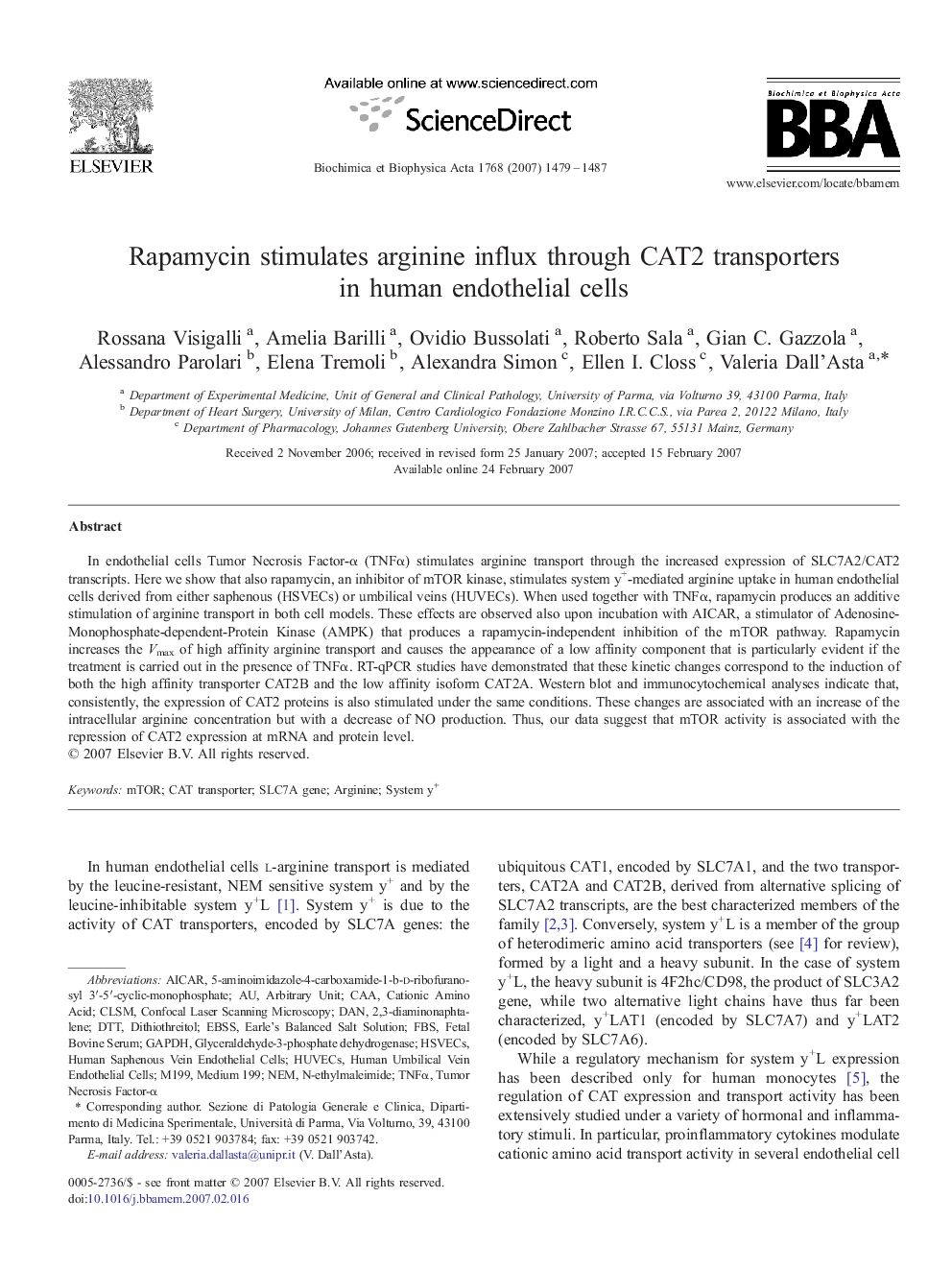| کد مقاله | کد نشریه | سال انتشار | مقاله انگلیسی | نسخه تمام متن |
|---|---|---|---|---|
| 1945894 | 1053279 | 2007 | 9 صفحه PDF | دانلود رایگان |

In endothelial cells Tumor Necrosis Factor-α (TNFα) stimulates arginine transport through the increased expression of SLC7A2/CAT2 transcripts. Here we show that also rapamycin, an inhibitor of mTOR kinase, stimulates system y+-mediated arginine uptake in human endothelial cells derived from either saphenous (HSVECs) or umbilical veins (HUVECs). When used together with TNFα, rapamycin produces an additive stimulation of arginine transport in both cell models. These effects are observed also upon incubation with AICAR, a stimulator of Adenosine-Monophosphate-dependent-Protein Kinase (AMPK) that produces a rapamycin-independent inhibition of the mTOR pathway. Rapamycin increases the Vmax of high affinity arginine transport and causes the appearance of a low affinity component that is particularly evident if the treatment is carried out in the presence of TNFα. RT-qPCR studies have demonstrated that these kinetic changes correspond to the induction of both the high affinity transporter CAT2B and the low affinity isoform CAT2A. Western blot and immunocytochemical analyses indicate that, consistently, the expression of CAT2 proteins is also stimulated under the same conditions. These changes are associated with an increase of the intracellular arginine concentration but with a decrease of NO production. Thus, our data suggest that mTOR activity is associated with the repression of CAT2 expression at mRNA and protein level.
Journal: Biochimica et Biophysica Acta (BBA) - Biomembranes - Volume 1768, Issue 6, June 2007, Pages 1479–1487